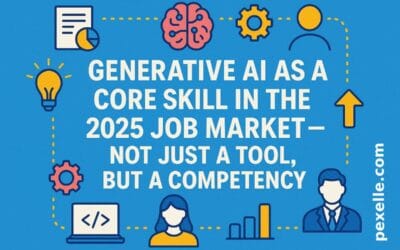Neuro-Human Learning: Direct Brain-AI Interfaces for Instantaneous Education

Introduction
Imagine learning a new language or mastering complex skills not through study, but by seamlessly streaming knowledge into your brain—this isn’t science fiction anymore. Neuro‑human learning, via brain–computer interfaces (BCIs) combined with artificial intelligence, may soon make this a reality. This emerging field offers the potential for real-time, personalized education that redefines how we acquire knowledge.
Current Foundations and Breakthroughs
1. Components of Brain–Computer Interfaces (BCIs)
BCIs create a direct communication channel between the brain and machines, bypassing traditional input methods like speech or typing. They utilize technologies ranging from non-invasive EEG to implantable neural devices. Implantable BCIs, although more precise, carry higher technical and ethical challenges.
2. AI as the Brain of the System
Artificial intelligence plays a central role in decoding and interpreting neural signals. Through machine learning and signal processing, BCIs learn to recognize unique neural signatures, translating brain patterns into actionable commands. Recent innovations, such as the LGL‑BCI, apply geometric deep learning for faster and more accurate inference—boosting performance to 82.5% accuracy while using fewer computational resources.
3. Real-Time Interaction and Feedback
Studies show BCIs can enhance cognitive functions like concentration, memory, and creativity by offering real-time feedback during tasks. In education contexts, such dynamic feedback could significantly improve retention and task performance.
4. Near-Instantaneous Communication
A major breakthrough emerged from UC Berkeley and UCSF researchers, who developed an AI-powered brain-to-voice neuroprosthesis capable of streaming speech directly from neural activity in near-real time—generating audible speech within one second. This leap in speed is foundational for future real-time neuro-educational systems.
5. Real-World Use Cases
Neuralink’s first human implant patient, a quadriplegic, already leverages the device to learn languages and study, demonstrating the framework’s utility for educational enhancement. Similarly, a brain-controlled robotic arm powered by AI enabled a paralyzed patient to perform everyday tasks through thought alone.
The Vision: Instant, Personalized Learning Through Neuro-Human Integration
1. Instant Knowledge Streaming
Envision educational content—languages, formulas, conceptual knowledge—being streamed into the brain as data, enabling nearly instantaneous learning.
2. Adaptive, Personalized Experiences
AI can adapt content delivery based on a learner’s real-time neural state, tailoring difficulty, pacing, and presentation to maximize learning outcomes.
3. Multimodal Immersion
Combining VR/AR technologies with BCIs could create immersive, multimodal learning environments where sensory-rich experiences are directly mapped to neural processes.
Opportunities & Benefits
- Equalized Education Access: Remote or underserved learners could access advanced learning without traditional barriers.
- Efficiency and Speed: Real-time adaptation and feedback might accelerate skill acquisition dramatically.
- Enhanced Focus & Retention: Immediate neural feedback loops could sharpen attention and improve memory consolidation.
Ethical, Technical & Societal Challenges
- Signal Variability: Brain data varies widely across individuals, complicating cross-user applications.
- Privacy & Security Risks: Direct neural data access raises unprecedented concerns around data misuse and brain privacy.
- Invasiveness vs. Usability: Implantable systems offer precision, but their risks may limit widespread adoption.
- Equity & Regulation: Ensuring fair access and creating protective policies will be essential to prevent misuse or inequality.
Future Outlook & Roadmap
| Phase | Description |
|---|---|
| Short-Term (1–3 years) | Integration of EEG-based, non-invasive BCIs with educational tools for real-time feedback loops. |
| Mid-Term (3–7 years) | Implantable BCIs with AI-driven content delivery in controlled settings may emerge; breakthroughs like near-instant speech decoding become foundational. |
| Long-Term (7–15 years) | Fully immersive, neuro-human learning systems – direct streaming of knowledge, universally personalized education, and integration into daily life. |
Conclusion
Neuro-human learning via direct brain–AI interfaces represents a bold transformation in education. By harnessing real-time AI decoding of neural signals, we could one day learn faster, more deeply, and more personally than ever before. These technologies offer the promise of unlocking latent human potential—but only if we navigate their challenges with rigor, responsibility, and inclusivity.
Source : Medium.com





Your positivity and enthusiasm are contagious Reading your blog has become a part of my daily routine and I always leave feeling better than when I arrived